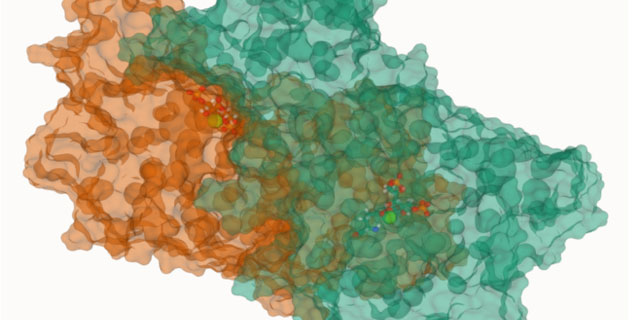The enzymes that can reduce emissions

AI and humans in focus
With the help of advanced AI technology, KTH researchers are developing completely new proteins to contribute to a more sustainable world.
These include accelerating the uptake of carbon dioxide by algae and creating food without using animals.
“We are working on improving cells. Using newly developed AI techniques, we can now alter enzymes inside cells in ways that have never before been accessed by evolution, but still look and function like natural enzymes. This is because these AI tools have been trained on how proteins work and can guess what kind of mutation might lead to an improvement. In some cases, the enzyme gets better to the point where the cells can be used in the chemical industry. It becomes a green catalyst,” says Paul Hudson, Professor of Microbial Bioenergy Production.


Can suggest new variants
Proteins are made up of long chains of amino acids. Enzymes are proteins that trigger various chemical reactions. Language-based AI models and the diffusion method, which is otherwise used to generate images, have been shown to work well for generating new protein sequences. With the help of machine learning, these models are trained in the structure of proteins and can thus suggest their own, new variants.
“This gives us the tools to explore new chemical reactions in a way that was not possible a year ago”, says Ulysse Castet, doctoral student at the Division of Systems Biology.
Allows to take a different evolutionary path
As part of his doctoral studies, Castet will work on different projects using generative AI. One of them is funded by the Swedish Foundation for Strategic Research (SSF) and based on Rubisco, a CO2-fixing enzyme that Castet worked on already during his master's studies.
“This is the main enzyme in algae that is used for carbon fixation. It has evolved very slowly over a billion years. The enzyme has also been very difficult to improve using traditional methods. Now, we can create totally new variants of the Rubisco enzyme, some that are radically different in sequence than those in Nature. Each one of these new sequences may function better right away, or at least allow the enzyme to take a different evolutionary path in the laboratory,” Professor Hudson says.
Can be used in alternative foods
Another research project is using AI to create new proteins that can be used in alternative foods. The project is at an early stage and is within KTH's center formation KTH Food.
“For example, a food product will be able to replace milk and the modified proteins will be created outside the cow. Many proteins can be produced by yeast via fermentation, and do not require the use of animals. AI may even allow us to begin to change the properties of these food proteins to make them better for our health ,” Professor Hudson says.
Rely on expert validation
Researchers emphasize that AI is a tool that gives them guidance and help. However, the result must also be confirmed using other tools.
“We use many methods and always rely on expert validation, such as testing the results in the lab. This can require testing many variants of a proposed protein to find the desired function,” Castet says.
Text: Sabina Fabrizi
